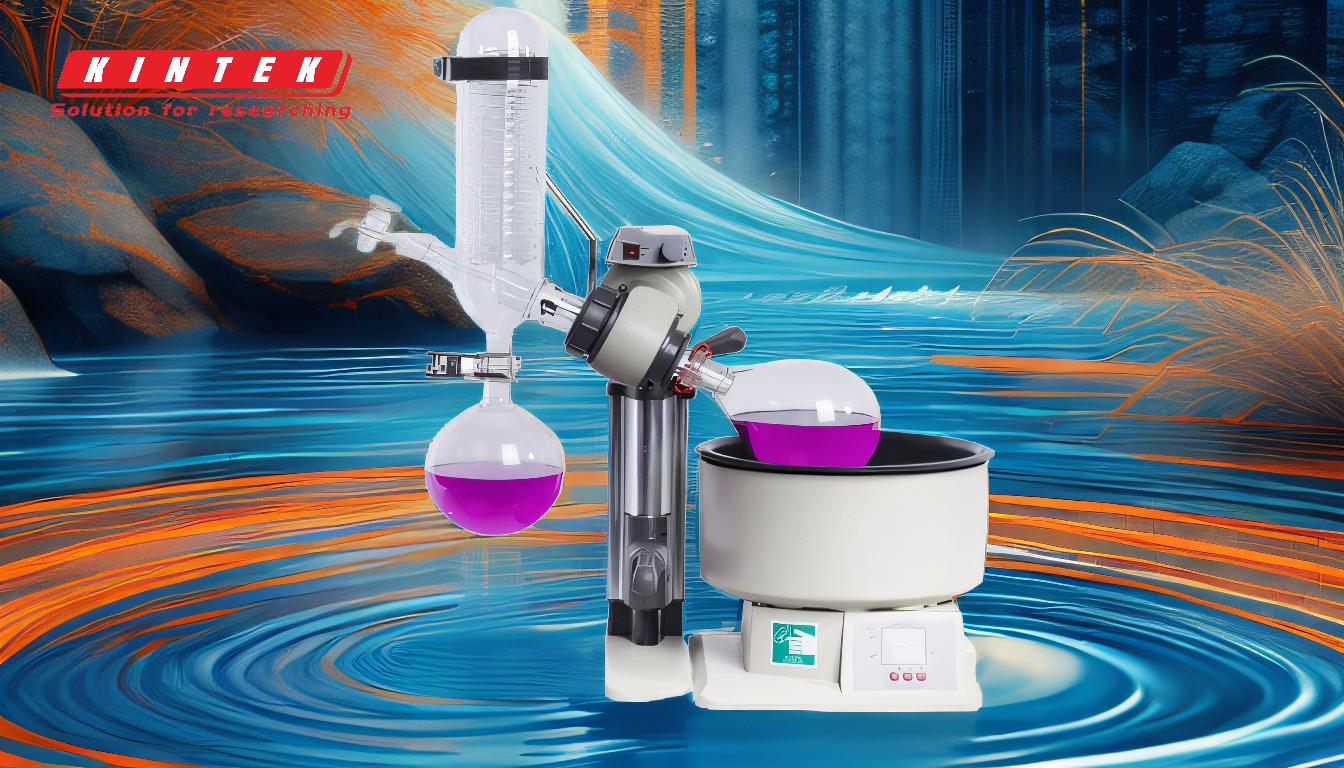Vacuum rotary evaporators are widely used in laboratories for solvent removal and concentration of samples, but there are several alternatives that can be employed depending on the specific requirements of the process. The primary alternatives include the Falling Film Evaporator and the Wiped Film Evaporator, both of which operate on different principles but achieve similar results. Additionally, other techniques such as nitrogen evaporation, centrifugal evaporation, and vacuum-vortex evaporation can also be considered based on the sample type, volume, and desired outcome. Each method has its own advantages and limitations, making it crucial to select the most suitable technique for the task at hand.
Key Points Explained:

-
Falling Film Evaporator:
- Principle: Operates similarly to a Vertical Shell & Tube Heat Exchanger. The liquid to be evaporated flows downward as a thin film along the inner surface of heated tubes, while the heat is applied from the outside.
-
Advantages:
- Efficient heat transfer due to the large surface area of the thin film.
- Suitable for heat-sensitive materials as the short residence time minimizes thermal degradation.
- Can handle large volumes of liquid.
- Applications: Commonly used in the chemical, pharmaceutical, and food industries for concentrating heat-sensitive liquids or for separating volatile components from less volatile ones.
-
Wiped Film Evaporator:
- Principle: Works on the principle of thermal separation in a thin, turbulent liquid film. The liquid is spread into a thin film by mechanical wipers or rollers, and heat is applied to evaporate the volatile components.
-
Advantages:
- High evaporation rates due to the turbulent flow and large surface area.
- Effective for viscous or fouling materials as the wipers prevent the buildup of deposits on the heating surface.
- Suitable for continuous operation and can handle a wide range of viscosities.
- Applications: Often used in the chemical, petrochemical, and food industries for the concentration of viscous liquids, distillation of heat-sensitive materials, and recovery of solvents.
-
Nitrogen Evaporation:
- Principle: Uses a stream of nitrogen gas to gently blow over the surface of the liquid, accelerating the evaporation process by reducing the partial pressure of the solvent.
-
Advantages:
- Gentle evaporation method suitable for heat-sensitive compounds.
- Can be used for small volumes and is often employed in analytical laboratories.
- Applications: Commonly used in sample preparation for analytical techniques such as HPLC, GC, and mass spectrometry.
-
Centrifugal Evaporation:
- Principle: Combines centrifugal force with vacuum and heat to evaporate solvents. The sample is placed in a centrifuge, and the combination of centrifugal force and vacuum reduces the boiling point of the solvent, allowing for rapid evaporation.
-
Advantages:
- Rapid evaporation due to the combination of centrifugal force and vacuum.
- Suitable for small volumes and multiple samples.
- Minimizes the risk of cross-contamination.
- Applications: Often used in high-throughput laboratories for concentrating samples, particularly in genomics, proteomics, and drug discovery.
-
Vacuum-Vortex Evaporation:
- Principle: Combines vacuum and vortex mixing to enhance the evaporation process. The sample is placed in a container that is subjected to a vacuum while being agitated by a vortex mixer.
-
Advantages:
- Enhanced evaporation rates due to the combination of vacuum and agitation.
- Suitable for small volumes and can be used for multiple samples simultaneously.
- Applications: Commonly used in laboratories for the concentration of small volumes of solvents or for the preparation of samples for analysis.
-
Considerations for Choosing an Alternative:
- Sample Type: The nature of the sample (e.g., heat-sensitive, viscous, volatile) will influence the choice of evaporation method.
- Volume: The volume of the sample to be processed will determine whether a batch or continuous process is more suitable.
- Speed: The required speed of evaporation may vary depending on the application, with some methods offering faster evaporation rates than others.
- Equipment Availability: The availability of specific equipment in the laboratory may also influence the choice of method.
In conclusion, while vacuum rotary evaporators are a common choice for evaporation processes, there are several alternatives that may be more suitable depending on the specific requirements of the application. The Falling Film Evaporator and Wiped Film Evaporator are excellent options for large-scale or continuous processes, while nitrogen evaporation, centrifugal evaporation, and vacuum-vortex evaporation are more suited for small-scale or high-throughput applications. Careful consideration of the sample type, volume, and desired outcome will help in selecting the most appropriate evaporation technique.
Summary Table:
| Method | Principle | Advantages | Applications |
|---|---|---|---|
| Falling Film Evaporator | Liquid flows as a thin film along heated tubes; heat applied externally. | Efficient heat transfer, suitable for heat-sensitive materials, handles large volumes. | Chemical, pharmaceutical, and food industries for heat-sensitive liquids. |
| Wiped Film Evaporator | Liquid spread into a thin film by wipers; heat evaporates volatile components. | High evaporation rates, effective for viscous materials, continuous operation. | Chemical, petrochemical, and food industries for viscous liquids and heat-sensitive materials. |
| Nitrogen Evaporation | Nitrogen gas blows over liquid to accelerate evaporation. | Gentle method for heat-sensitive compounds, suitable for small volumes. | Analytical laboratories for HPLC, GC, and mass spectrometry sample preparation. |
| Centrifugal Evaporation | Combines centrifugal force, vacuum, and heat for rapid evaporation. | Rapid evaporation, suitable for small volumes and multiple samples, minimizes cross-contamination. | High-throughput labs for genomics, proteomics, and drug discovery. |
| Vacuum-Vortex Evaporation | Combines vacuum and vortex mixing to enhance evaporation. | Enhanced evaporation rates, suitable for small volumes and multiple samples. | Laboratories for small-volume solvent concentration and sample preparation. |
Need help selecting the right evaporation method for your lab? Contact our experts today!












